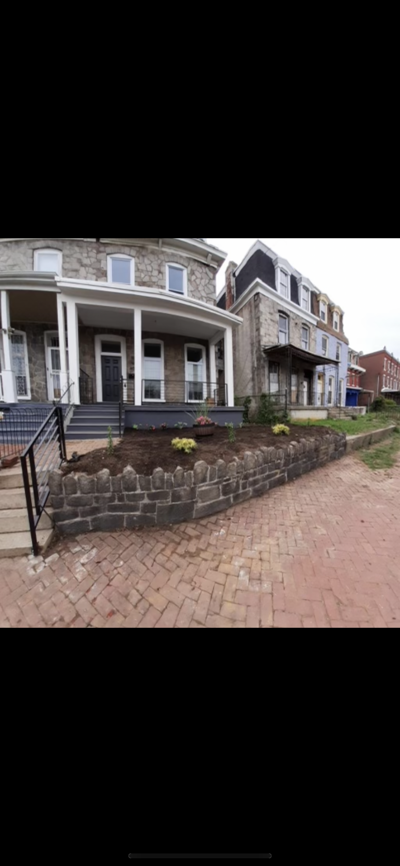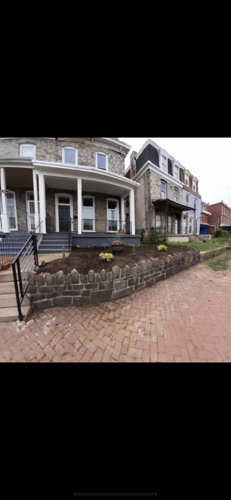If you follow my column, you are aware of the regular references to my old West Philadelphia neighborhood, “The Bottom.” Some refer to this area as “down the way.” I know its parameters as the area from 50th Street to 33rd Street and Market Street to Girard Avenue, with the area from 40th Street and below being known as “The Black Bottom.” Some, however, will define it differently.
Last Saturday, I attended the funeral service for the brother of a close friend at the St. Jude Baptist Church at 632 North 38th Street; yes, “The Black Bottom.” As it was very hot, I loaded a small cooler with icepacks and bottled water in anticipation of attending an old church without air-conditioning. I was surprised as I looked for parking by the aggressive renovations and new construction on many lots. The church, which began as a store front, purchased surrounding structures and converted into a completely renovated church with central air conditioning. It was modern, comfortable, and attractive; pews with thick, soft cushions were an added comfort.
During his eulogy, the Pastor mentioned that the area of this church’s location was known as “The Bottom,” during his youth, but with gentrification, is now called Mantua, Powelton Village and University City. As I drove home, I kept thinking about my down the bottom neighborhood, having lived in the 600 block of 43rd Street where I spent my days there until age twenty-six. While many cannot relate to my neighborhood, you may have had experiences in similar areas around the city. Perhaps you have memories of Parkside, Fairmount, Northern Liberties, Fishtown, Yorktown, or Tioga, to name a few. Of course, South Philadelphia should be at the top of the list with the aggressive gentrification that continues to occur in this area. Thinking about these areas and the neighborhood in which I lived caused me to reflect on the fond memories of growing up, down the bottom, back in the day.
It is our family home in my old neighborhood that is most memorable. Homes in this area were not extravagant but they were neat. Many were similar to what I saw last Saturday around 38th Street. They were small ‘band box” row homes with marble steps or semi-detached homes with porches. Do you recall the swings, gliders and rockers on the porches? Perhaps you recall that several of the semi-detached homes had enclosed porches and others had awnings. Many of the row homes had flower boxes attached to their first floor windows.
Attending the funeral at St. Jude Baptist Church brought back memories of churches and other community facilities located in the bottom. There were the churches where many of us learned the lessons of the Bible. You may have attended Mt. Olivet Baptist Church, Ward’s AME Church or Mt. Pisgah AME Church may have been the choice of your family. You may remember attending White Rock Baptist Church when it was at 45th and Fairmount before it relocated to 52nd and Arch Streets or Penn Memorial Baptist which was located at Belmont and Westminster Avenues before moving to its current location. If it was not one of these churches, I am sure there was a church you attended as this was an expectation of our parents in the past. Church attendance was balanced with activities like going to the movies. But there was definitely no movie attendance on Sundays when we were growing up. If you are a “movie goer” today and live in one of our old neighborhoods, you likely travel to a mall to go to the movies. But you must remember going to the movies in your own neighborhood in the past. For me, there were the Belmont, the Fans, the Leader, and the Colonial. Yes, we spent many hours in movies in our own neighborhoods on Saturday afternoons where we caught the matinee for ten cents with a twenty-five cents to purchase popcorn, a soft drink and a candy bar. Then there were our playgrounds and recreational facilities where we had much fun. The Parkside YMCA and Drexel Field were my favorites. Our neighborhood streets were the places where many of us played touch football, wall ball, kick the can, dodge ball, jumped double Dutch and lots of other games that have disappeared from our landscape. How could I forget the Black businesses in my down the bottom neighborhood that produced jobs and provided needed goods and services? Also, my down the bottom neighborhood, like the neighborhood in which many of you lived had its shopping strip where most of us shopped. For me, it was Lancaster Avenue, a thriving shopping area, where you could purchase almost anything, back in the day.
In gathering materials for this column, I came across a site all about “The Black Bottom” that provided some interesting information regarding my old neighborhood. Contrary to what I thought, “The Bottom” was not an area initially occupied by whites that eventually became a Black area as is the case with most changing neighborhoods. Rather, “The Bottom” was occupied by Blacks in the late 1800s when they came to Philadelphia from the time William Penn imported slaves in 1685. The area was known as Greenville. It became known as “The Bottom” as it was the bottom part of West Philadelphia. It was the “Black Bottom” as it was primarily occupied by Blacks who referred to themselves as “The Black Bottom Tribe.” You may want to check out this site as it is quite revealing. The closeness of this neighborhood is evident to this day with the regular gatherings by current and previous bottom residents that occur each year, mainly in Fairmount Park to embrace memories of the past as I am doing in this column, from back in the day.
“The Bottom” neighborhood and similar neighborhoods that we once knew are gone but based on developments in my old 43rd Street neighborhood and developments in the vicinity of St. Luke Baptist Church, it is apparent that we have witnessed the worse of things. All of these neighborhoods where Black folks once occupied are on the rebound. But we should not have allowed our neighborhoods to have deteriorated as many did, taking gentrification to bring these communities back to life. So take it from me, if you have any property in any of these old Black neighborhoods, hold on to them; make a small investment. You will not only reap financial benefits beyond your wildest dreams but you will also be holding on to some of those fond memories that many of us cherished but unfortunately abandoned and left back in the day.








(0) comments
Welcome to the discussion.
Log In
Keep it Clean. Please avoid obscene, vulgar, lewd, racist or sexually-oriented language.
PLEASE TURN OFF YOUR CAPS LOCK.
Don't Threaten. Threats of harming another person will not be tolerated.
Be Truthful. Don't knowingly lie about anyone or anything.
Be Nice. No racism, sexism or any sort of -ism that is degrading to another person.
Be Proactive. Use the 'Report' link on each comment to let us know of abusive posts.
Share with Us. We'd love to hear eyewitness accounts, the history behind an article.